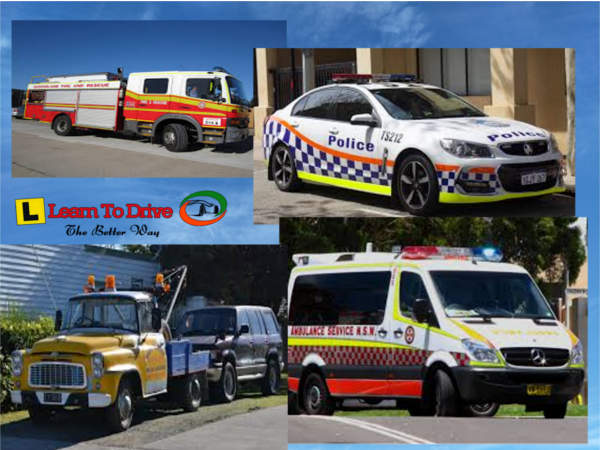Slow Down for Emergency Vehicles NSW
New road rules commenced on 26th September 2019, you must slow down for emergency vehicles NSW. Driving to the conditions of the road has always been a requirement for drivers in NSW, however some drivers have failed to slow down for emergency vehicles. As a result of this the government undertook a trial period with new laws which are more specific than driving to the conditions of the road. Trials concluded that the new road rules improved road safety for emergency services personnel, the new rules have been expanded to include roadside workers as well.
When the speed limit is 80 km/h you must now slow down to 40 km/h when passing a stationery vehicles with flashing lights.
Vehicles covered by this law are:
- Police force vehicles
- Ambulance vehicles
- Fire and Rescue Vehicles
- State Emergency Services vehicles
- Rural Fire Service vehicles
- Volunteer Rescue Association Vehicles
- Transport Emergency Patrol Vehicles
- Traffic Commander Vehicles
- Tow Trucks
- Breakdown Assistance Vehicles such as NRMA and Allianze Roadside Assistance Vehicles
Once you have identified the workers on or near the side of the road make sure you slow down, even if there are no flashing lights. You must always drive to the conditions of the road.

Slow down to a reasonable speed when the Speed limit is 90 km/h or more
When the speed limit is 90 km/h or more you must slow down to a reasonable speed.
On roads where the speed limit is 90 km/h or more on a single lane road you will need to move as far as reasonably possible away from the vehicle. However on multiple lane roads you will need to vacate the lane closest to the vehicle with the flashing lights, unless it is unsafe to do so.
Motorists require more time and space to slow down when travelling at higher speeds. Therefore when the speed limit is 90 km/h or more you must slow down to a reasonable speed. It may be necessary to slow down more if
- there is a clear line of sight to the stationery vehicle with flashing lights
- the stationery vehicle is positioned close to the moving traffic with limited space available
- there are pedestrians on the road near the incident or breakdown
- it is safe to reduce your speed can be reduced in a controlled way
These rules apply to the speed limit of the road you are travelling on, not the speed you are travelling at. These rules apply to all roads as there are no roads with speed limit signs between 80 km/h and 90 km/h.
Once you have identified the stationery vehicle with flashing lights you must take the appropriate action. Depending on the speed limit of the road you are travelling on.
Sometimes referred to as Sarah’s rule because the rule change came about due to a fatal accident involving Sarah Frazer. Sarah and the tow truck driver who came to her aid both died. Please learn the rules and make sure you follow the. We all deserve to make it home safely.
For more information please visit Transport for New South Wales.

